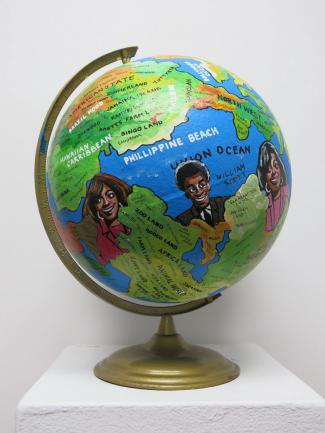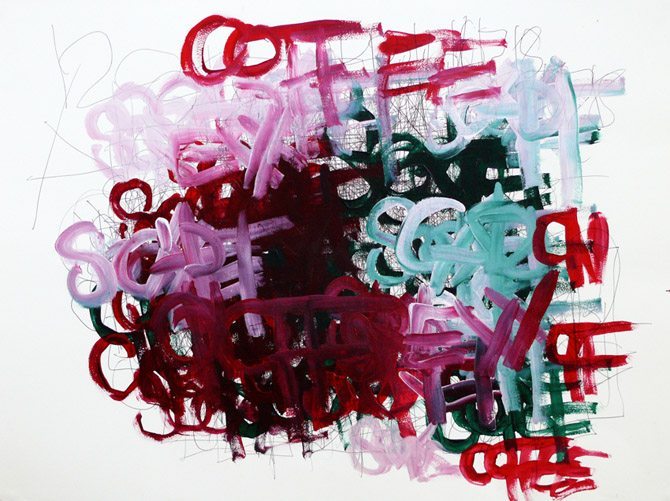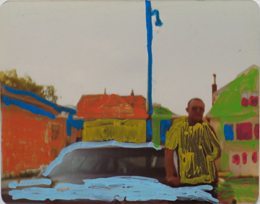Previews Five Points With Tom di Maria
January 30, 2015 by Chris Chang
Tom di Maria has served as the director of the Creative Growth Art Center since 2000. Prior to this position, he was assistant director of the Berkeley Art Museum/Pacific Film Archive at the University of California Berkeley. An award-winning filmmaker, di Maria has received prizes from Sundance, Black Maria, Sinking Creek, National Educational Media and New York Experimental film festivals. Creative Growth is participating in the Outsider Art Fair, on view at Center 548 in Chelsea (through Feb. 1).
1) For those that do not know, please explain the Creative Growth Art Center. It's the oldest and largest art center in the world for people with disabilities-primarily developmental. We have people on the autism spectrum, with Down syndrome, with different forms of mental retardation, with some kinds of brain injury and a variety of other disabilities. The center was founded over 40 years ago by Florence and Elias Katz, at a time when California was deinstitutionalizing people with disabilities. Creative Growth has never taught in a formal way. We're not art therapists or a provider of social services. We just say: Come here, find your way, find your voice and tell us your story. Take as much time as you need. There are now over 150 artists per week working with us.
2) Tell me a bit about your background, specifically in regards to how it relates to your present mission. I studied film and photography and worked at and directed various film festivals. In terms of my livelihood I was more successful as an arts administrator than an artist. I grew up in the age of AIDS and I saw how art could have a transformative social component, by helping people understand the world differently. When the last director of Creative Growth was retiring 15 years ago, I went there reluctantly, but found the place so compelling I couldn't leave. My first thought was, this is so different from a museum! It's not a temple of the object; it's a laboratory of aesthetics.
3) Judith Scott's show at the Brooklyn Museum [through Mar. 29] must be extremely important for you. I don't think our founders could have ever imagined that show. Her life parallels Creative Growth's history. The visibility of the Brooklyn show, and the fact that it takes place within the Elizabeth A. Sackler Center for Feminist Art, is simply phenomenal. We also now have three artists in MoMA's collection. Dan Miller was the first, and then Judith Scott and William Scott [no relation]. Judith was deaf but never diagnosed as such. She was never taught sign language or any other language. The work she did was a language substitute.
4) Not unlike Dan Miller. Some of our artists work with us for years, if not decades, before they achieve any level of success. Dan is a nonstop worker. He comes in five days a week. He's unable to travel by himself so we send a bus to pick him up. In addition to his severe autism, he has a significant seizure disorder and needs to wear a helmet. Dan has become more and more interested in the abstract quality of words. His early work, for example, might feature a drawing of something figurative, like a rabbit, with words next to it. He continued writing more and started to paint words on top of each other. People remark on the visual similarity to Cy Twombly's work, but with Dan it's important to note that the content comes first. Dan and Judith are trying to find ways to tell their stories when they have no verbal words. The process is an extremely obsessive yet necessary part of their lives. When the piece is done, the object has very little value for them. It's time to move on. Usually within five seconds the next piece is started.
5) You are in town for the Outsider Art Fair. Are your artists outsiders? No! They're people with disabilities. They've lived outside of society in so many ways and have been called so many names they don't need another label. The reason why we participate in the Outsider fair is because so many people from the art world with an interest in self-taught, non-academic art show up. Our artists' work responds to that interest. With all of our sales, 50% goes to the artist and the remaining 50% goes to the organization, which pays for the artists' studio spaces and art supplies. That's why it's important for us to attend the fair. But when I look into the room at Creative Growth and see a hundred or so artists working and living in the present moment, I don't think of them as outsiders. I think of them as contemporary artists.
 Judith Scott
Judith Scott
 William Scott
William Scott
 Susan Janow
Susan Janow
 Dan Miller
Dan Miller
 Alice Wong
Alice Wong

